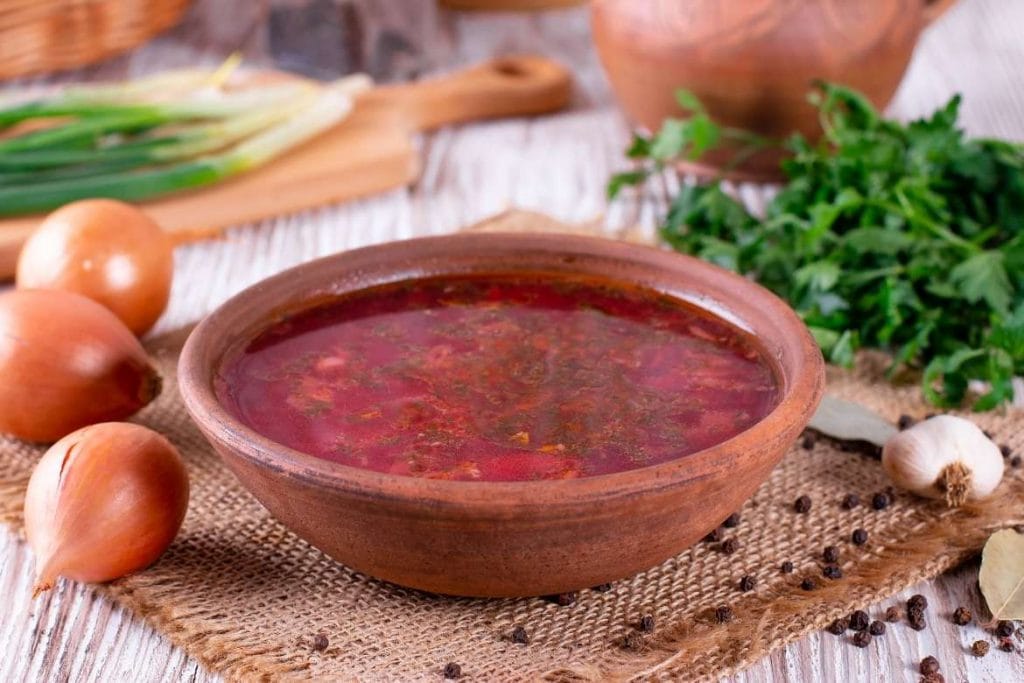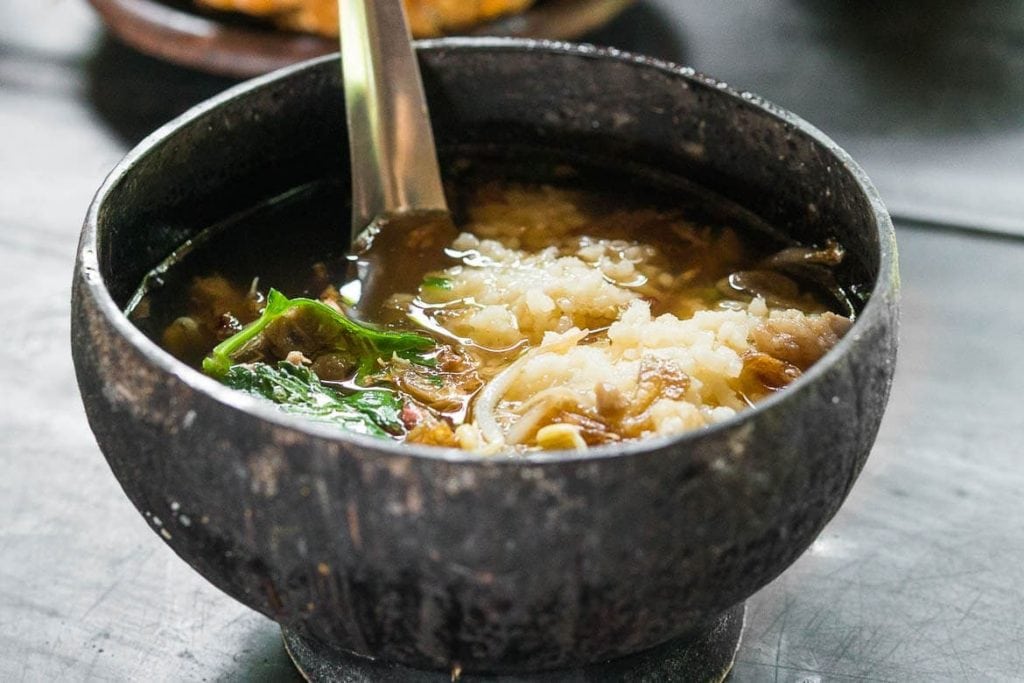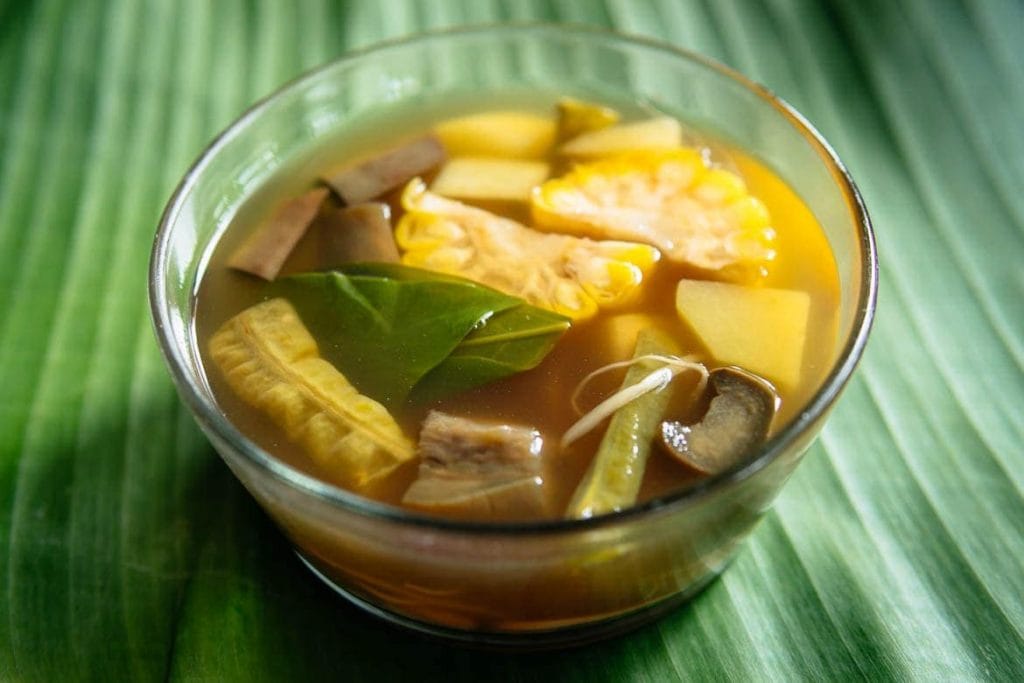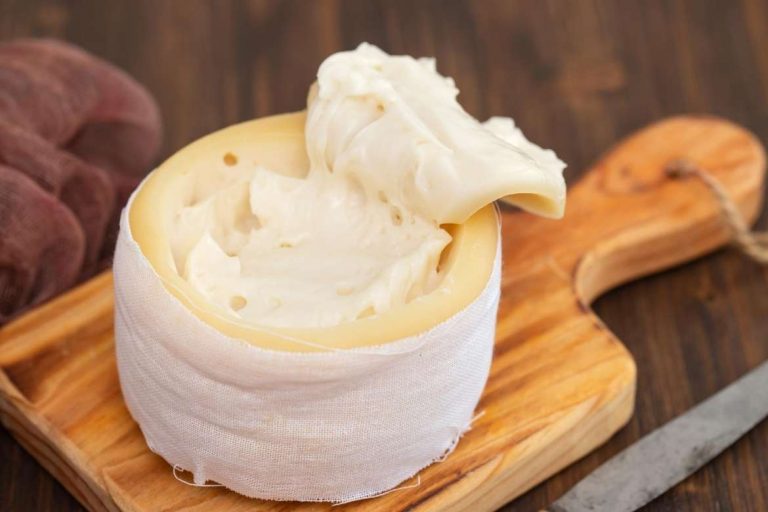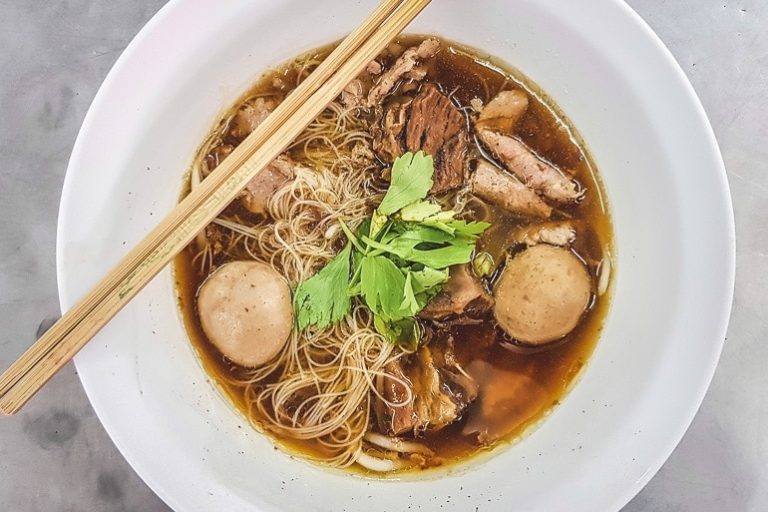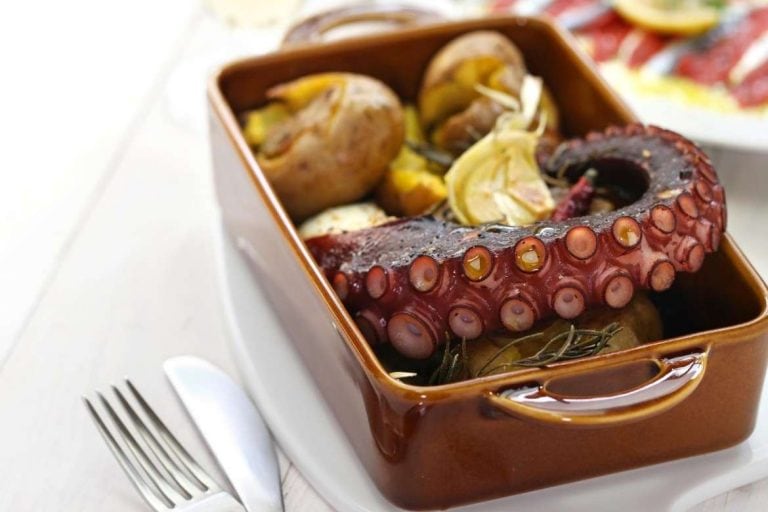When we talk about a type of dish that is eaten in practically every country in the world, the soup certainly deserves to be highlighted. Its origin dates back to the discovery of fire, which brought the possibility of cooking meats and vegetables. In this way, the history of soups is tied with the history of humanity itself, with each region incorporating its flavours and ingredients into this preparation.
Despite the immense variety of recipes around the world, one fact is inherent in all soups: their characteristic of providing comfort and hospitality. If you’re also a fan of this emblematic dish, we invite you to travel the world through 20 typical soups.
The most famous soups in the world
Gazpacho (Spain)
Spain’s most famous soup comes from its Mediterranean region, Andalusia. It is no wonder that the flavour of this typical Spanish dish is the result of fresh ingredients such as tomatoes, garlic, onions, pepper and olive oil.
Gazpacho originated during the Moorish occupation of the Iberian Peninsula in the medieval period. Initially, it was a dish consumed by peasants and did not include tomatoes in its composition. The fruit was incorporated into the soup only in the 16th century after the colonization of Mexico, from which the Spaniards brought the ingredient.
The name Gazpacho, in Arabic, means wet bread, since this soup is usually eaten cold accompanied with a piece of bread. Nowadays, the gazpacho recipe has several variations, which include the use of almonds, avocado, melon, watermelon, among other ingredients.

Harira (Morocco)
Arab cuisine also has delicious soups, such as Harira, of Moroccan origin. This preparation is traditionally consumed in the month of Ramadan, the period of the year when Muslims fast throughout the day as a means of reflection and closeness to their faith. After sunset, when food is allowed, Harira is consumed with dates and honey cakes.
This typical Moroccan soup is prepared with lamb, chickpeas and tomatoes. The result is a fragrant broth, well seasoned with saffron, cinnamon, ginger and nutmeg. Served warm, its texture is smooth, as its name Harira in Arabic suggests.
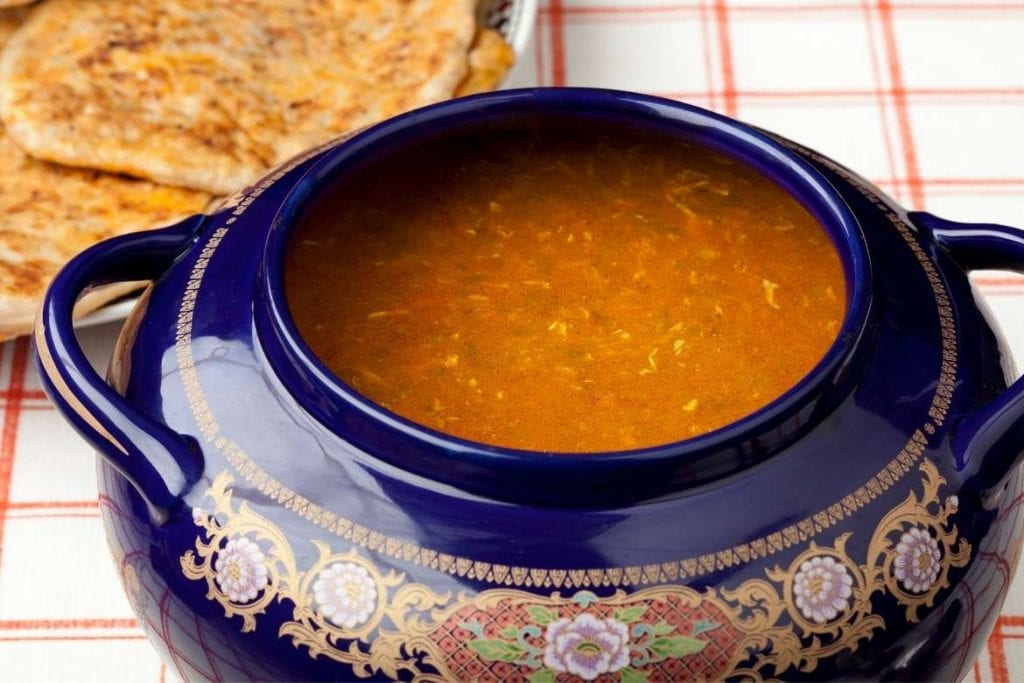
Laksa (Malaysia and Singapore)
Southeast Asia is known for its dishes with very complex and often contrasting flavours. Asian soups fit perfectly into this food culture, one of the most famous being Laksa, which is especially consumed in Malaysia and Singapore.
Read more: Discover the most popular food in Malaysia
Although there are several variations in its preparation, Laksa’s recipe is based on a broth made with spicy curry, ginger and coconut milk. To serve, it can be complemented with shrimp, chicken, tofu and traditional oriental noodles.
It is believed that the origin of this soup comes from a fusion between Chinese culture and that of the countries of Southeast Asia, as it combines ingredients typical of all these regions. There are theories that suggest that the name of the dish comes from Cantonese meaning “spicy sand”, a reference to the texture and flavour of this typical soup.
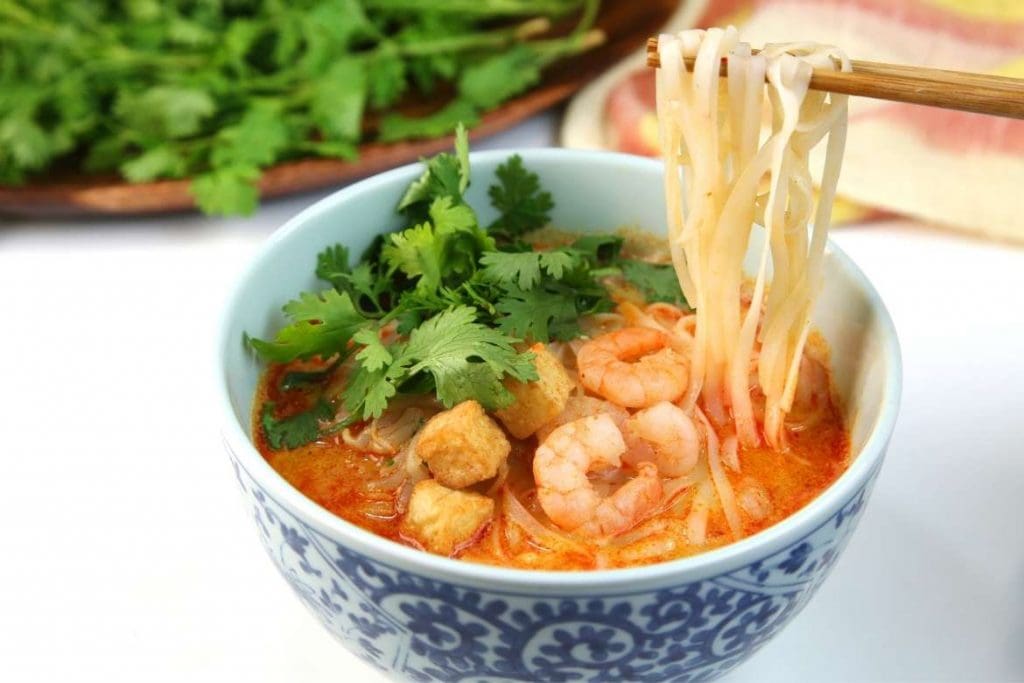
Yayla çorbası (Turkey)
Yoghurt, one of the most used ingredients in Turkish cuisine, is the basis for the country’s traditional soup, Yayla çorbasi. In this preparation, rice and chickpeas are cooked in a broth flavoured with spices and herbs. Yoghurt is what brings creaminess to the soup, and can be complemented with feta cheese.
Yayla çorbasi originated with the Assyrian people, who inhabited the region of Turkey in antiquity. Its name means “soup of the mountains” since it is widely consumed by the peasants of the mountainous regions of the country, due also to its high nutritional content.
By the way, the nutritional capacity of this soup makes it one of the most recommended in restoring the health of the sick in Turkey, being a prevalent item on the menus of clinics and hospitals.

Minestrone (Italy)
The most famous Italian soup appeared during the First World War. With the scarcity of food in the country, the peasants invented a salty broth, in which all available vegetables were cooked. At the time, the dish was prepared in the city squares, in large cauldrons, and each family contributed with the ingredients they had. Then came the Minestrone, which in Italian means “thick vegetable soup”.
There is no fixed rule for the Minestrone recipe. Various types of vegetables can be used, such as potatoes, celery and carrots. Some preparations also include meat, pasta and rice. This makes Minestrone one of the most democratic and affordable soups in the world.
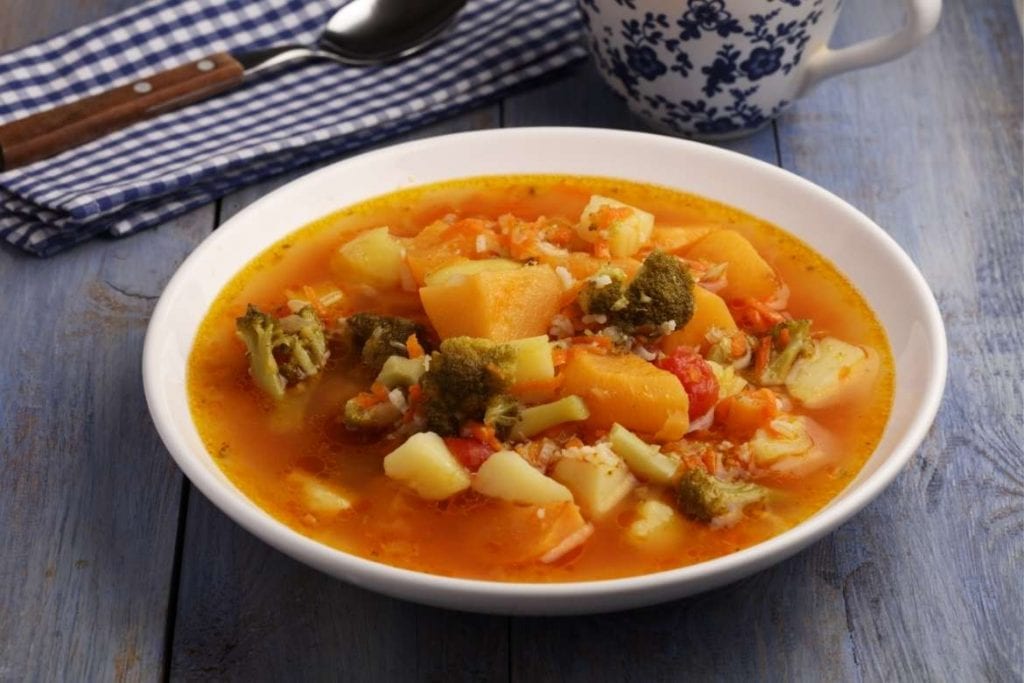
Tom Yum (Thailand)
Spicy soups are a predominant feature of Thai cuisine. Tom Yum is one of the most famous in the country, with an extremely aromatic broth, the result of the combination of several spices and herbs, including lemongrass, galangal and kaffir lime leaves.
In the Thai translation, Tom means “to cook” and Yum “to mix”. From this simple concept, there were several variations of the soup with different types of protein in its composition, such as Tom Yum Kung (with shrimp), Tom Yum Gai (with chicken) and Tom Yum Kha Mu (with pork).
For more soups and dishes of Thailand, see our special list of this fascinating cuisine.
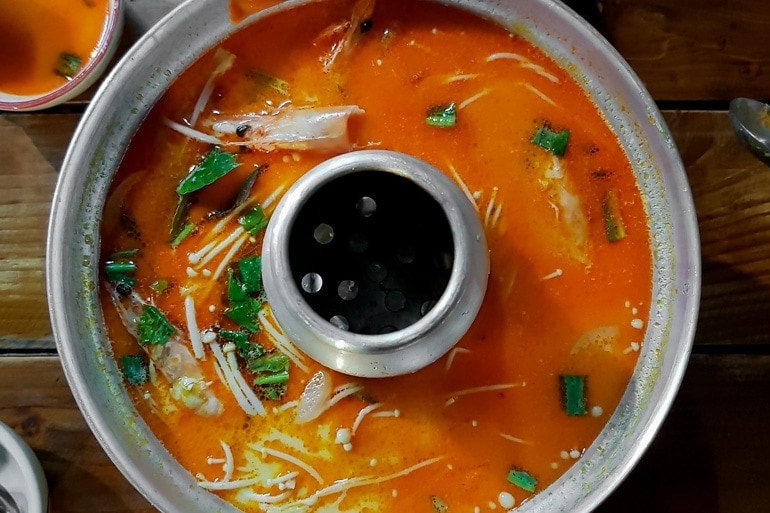
Tortilla Soup (Mexico)
Mexico is known worldwide for its corn tortillas, but few know that this food is the basis of a famous soup typical of the country. In the Tortilla Soup, pieces of fried corn tortillas are mixed with a tomato broth seasoned with onion, garlic, parsley and pepper.
Tortilla soup is especially popular in central Mexico. Its origin is a mixture of the legacy of the pre-Columbian peoples with that of the Spaniards who colonized the region. While tortillas had been prepared since 10,000 BC by the natives due to the abundance of corn in the region, it was the Europeans who brought the soup tradition to the American continent.

Caldo Verde (Portugal)
Considered one of the 7 Wonders of Portuguese Gastronomy, the Caldo Verde recipe came from the Minho region, one of the coldest and rainiest in the country. This hot soup served as a basis for the food of peasants, from the 15th century.
In the preparation, goes a typical vegetable from the north of Portugal: collard greens. This Portuguese soup is complemented by potatoes and, after being ready, a piece of chorizo is added to contrast with the mild flavours present there.
Traditionally, the Caldo Verde soup should be served in clay bowls, accompanied with cornbread and good red wine. Several countries colonized by Portugal adapted this recipe to their cuisines, such as Brazil, where it is made with a different type of sausage.
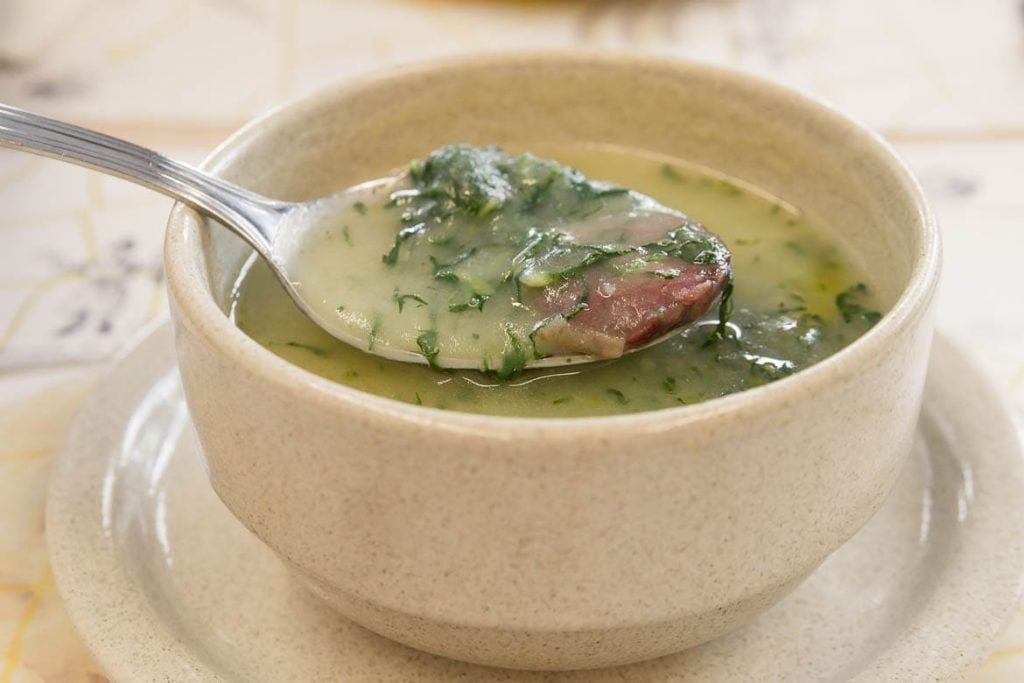
Phở (Vietnam)
Vietnamese cuisine is rich in flavours and textures, as can be illustrated by one of its most emblematic soups, Phở. In this dish, rice noodles and sliced beef are cooked in a fragrant broth with various spices such as coriander, ginger and cardamom.
In the original recipe, the broth takes more than 12 hours to be ready, which guarantees a unique flavour to this typical Vietnamese soup. Served in several restaurants across the country, Phở is even consumed for breakfast. Such popularity goes back to the French colonization in Vietnam when the dish was invented.
Find out more about the best Vietnamese dishes.
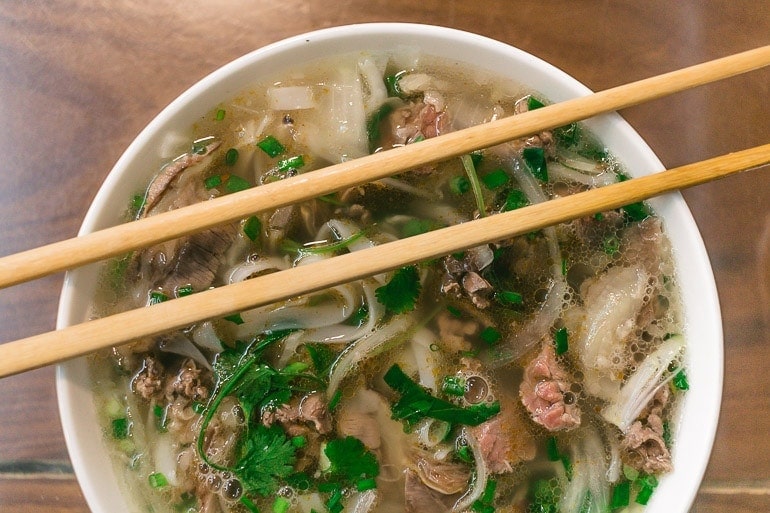
Soupe à l’Oignon Gratinée (France)
The elegant French cuisine features one of the most refined soups in the world, Soupe à l’Oignon Gratinée. Although onion soups were already consumed by the Greek and Roman civilizations, the first documented recipe for this dish as we know it today was prepared by a Frenchman in the 17th century.
Initially consumed by poor peasants, due to the affordable price of onions, the soup gained popularity and is now served in all types of restaurants. The great secret of this preparation is to brown the onions in butter until they are dark. When mixed in a seasoned broth, a slightly creamy and velvety soup is formed. Nowadays, it is served with a slice of bread and a nice layer of gratin cheese on top (sometimes too much!).

Wonton Soup (China)
With a tradition of rich and famous soups, China has dishes that mix different vegetables and meats in light and aromatic broths. One of the most famous soups in the country is Wonton Soup, originally from the Canton region. In this dish, a very fine dough made with flour and eggs, called wonton, is cooked in a spicy broth with vegetables and meat.
The origin of this soup dates back to the 17th century, during the Qing Dynasty, in which this dish was served only to wealthy families. With the advent of World War II, the soup became popular among the working classes and today it is consumed throughout the country and in the Southeast Asia region.

Chupe de Marisco (Peru)
Latin America also has a great legacy in the preparation of traditional soups. Fruit of the combination of pre-Columbian and Spanish cultures, one of the most famous dishes in the region is the Chupe de Marisco.
This traditional Peruvian soup, popular in the southern region of the country, is made with seafood cooked in a cream seasoned with pepper and garlic. The result is a creamy broth, in which cheese and white wine are added. Currently, variations are found with other proteins such as shrimp, beef and chicken.
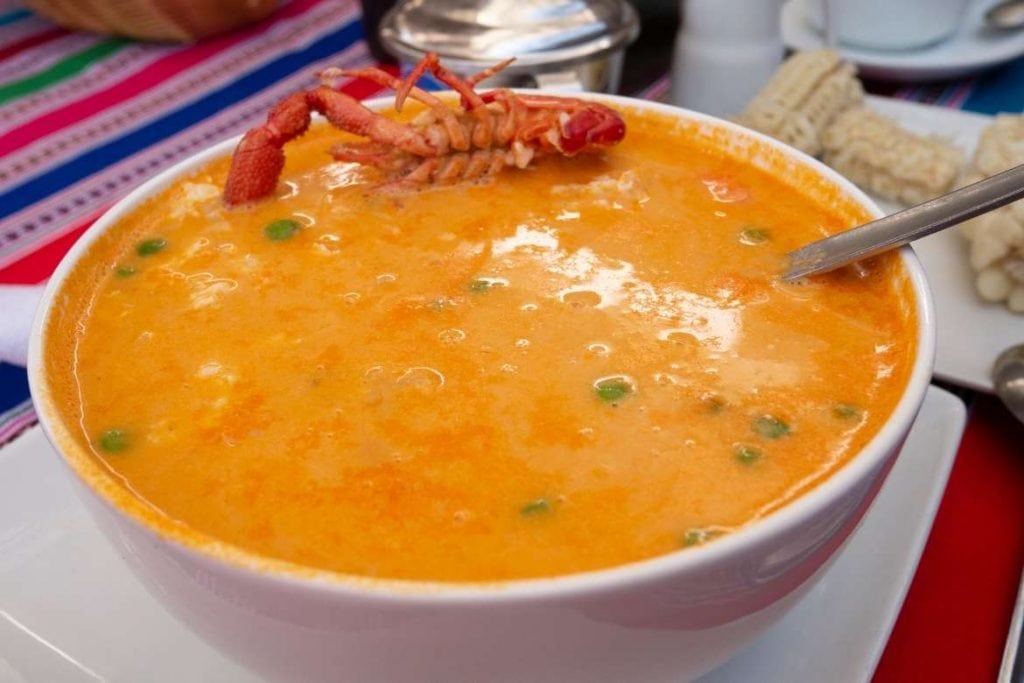
Soto (Indonesia)
One of the most popular dishes in Indonesia is Soto, a fragrant broth made with meat and rice noodles. Several variations are found in the streets of the country, one of the most famous being Soto Ayam, made with boiled chicken and served with eggs, tofu and fried onions.
Although it is considered an authentic Indonesian dish, Soto, in reality, did not originate in the country. This soup was introduced in Indonesia by the Chinese throughout their historical commercial relations. In fact, the word soto comes from the Chinese shao tu, which refers to cooked entrails.
Chowder Soup (USA)
One of the most traditional North American soup, the Chowder Soup, is made with cream and seafood. Its origin, however, is European, being first found on the coast of France and in the south-east of England in the 16th and 17th centuries. When sailors returned from their long journeys, they were greeted with fish and seafood soup, very similar to today’s Chowder Soup.
With the British colonization in the USA, the soup was brought to America and since the 17th century recipes for this dish have been found around the continent. There is even an official date on the American calendar to celebrate the National Chowder Soup Day.
Around the country, there are several varieties of this famous soup, including New England Clam Chowder (with onions and potatoes), Manhattan Clam Chowder (with tomato broth replacing sour cream) and Rhode Island Clam Chowder (with bacon and shellfish).
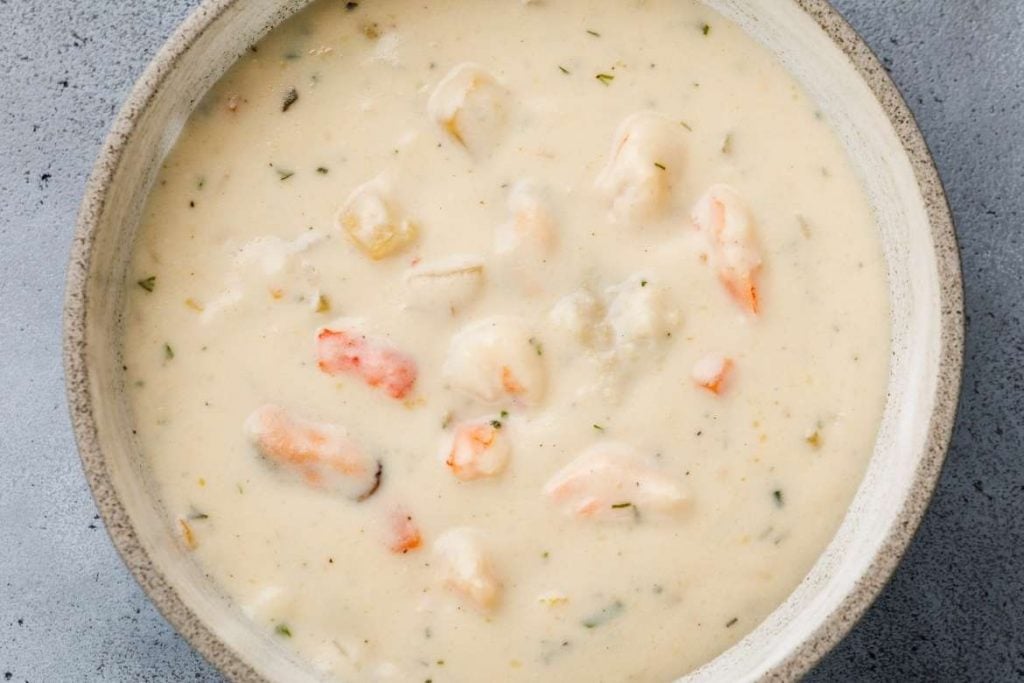
Tacacá (Brazil)
Brazil is a continental country with an immense variety of culinary traditions. Thus, it is difficult to choose a single soup that represents Brazil, but without a doubt, Tacacá is a dish that symbolizes many of its food references.
This famous soup from the Amazon region is an inheritance of the indigenous peoples, derived from an ancestral dish called mani poi. The exotic flavour of Tacacá is the result of a broth made from tucupi, jambu, dried shrimp and tapioca. This soup is traditionally served very hot in bowls, seasoned with pepper and salt.
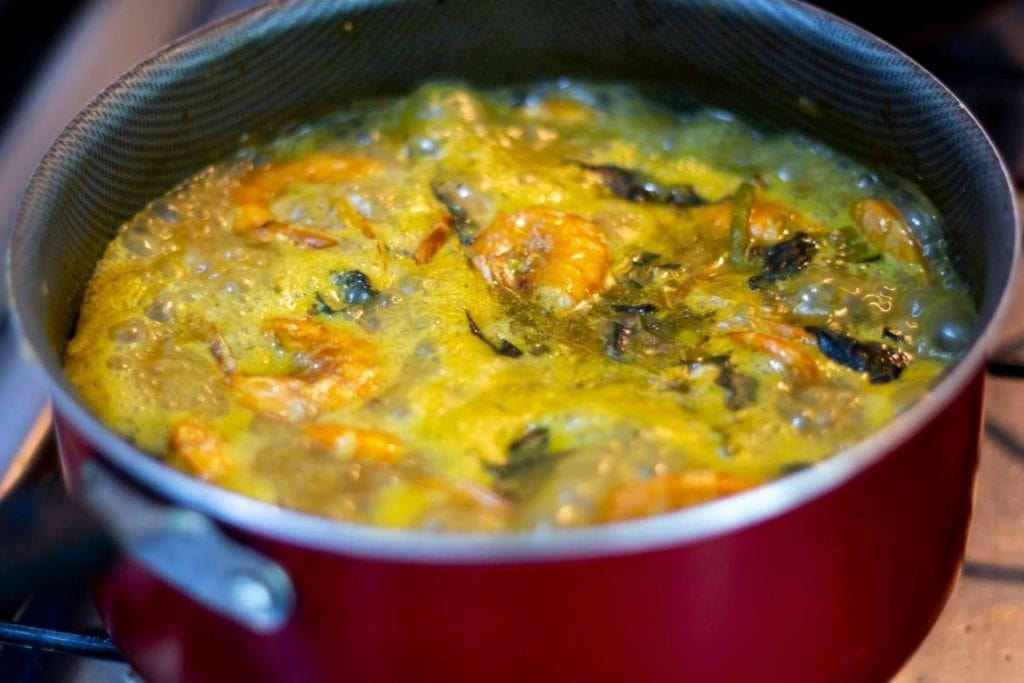
Goulash (Hungary)
One of the most famous soups in the world is Goulash, of Hungarian origin. Its roots merge with the history of their people, who, faced with the need to leave their homes when shepherding animals, prepared meats to take on trips.
During preparation, the meat was cooked in a seasoned broth until it dried. At the time of consumption, the shepherds heated them again with water, forming a hot and nutritious soup.
Over the centuries, the Goulash recipe has been improved with the addition of paprika and tomatoes, taking the shape we know today. In some preparations, potatoes and pasta are used to enrich the soup.
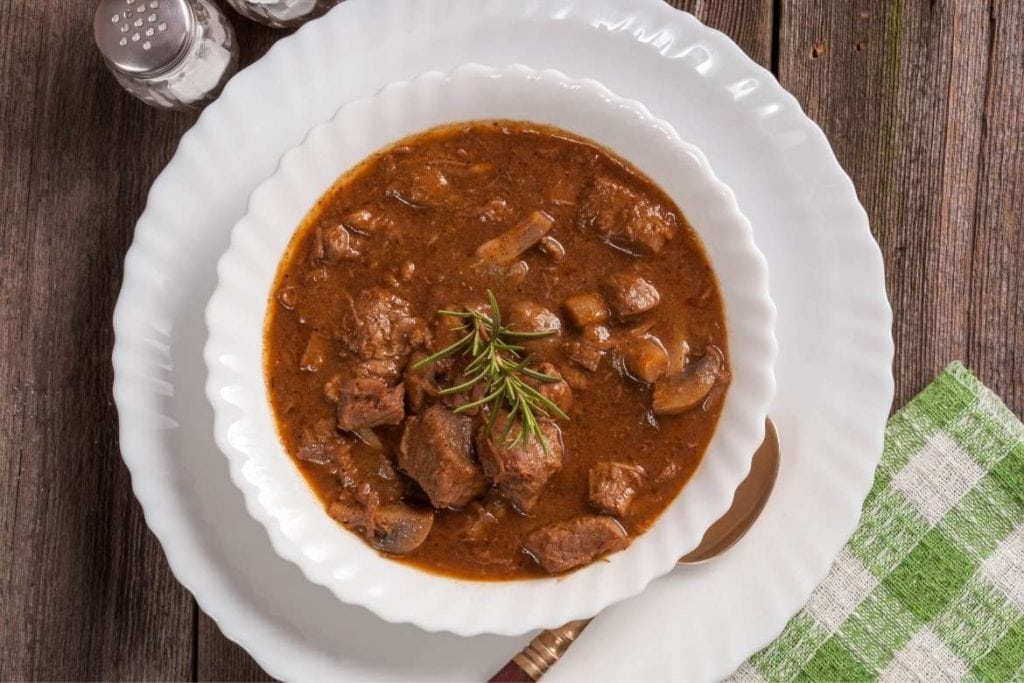
Tinola (Philippines)
Tinola is a typical soup from the Philippines, of which many varieties are found throughout the country. Its base is a hot broth with various spices, including ginger and garlic, and fish sauce. In this broth, chicken and local vegetables are cooked, such as papaya and chayote. There are other varieties of this soup with fish, seafood and various proteins. The best known is Tinolang Manok, which means Chicken Soup.
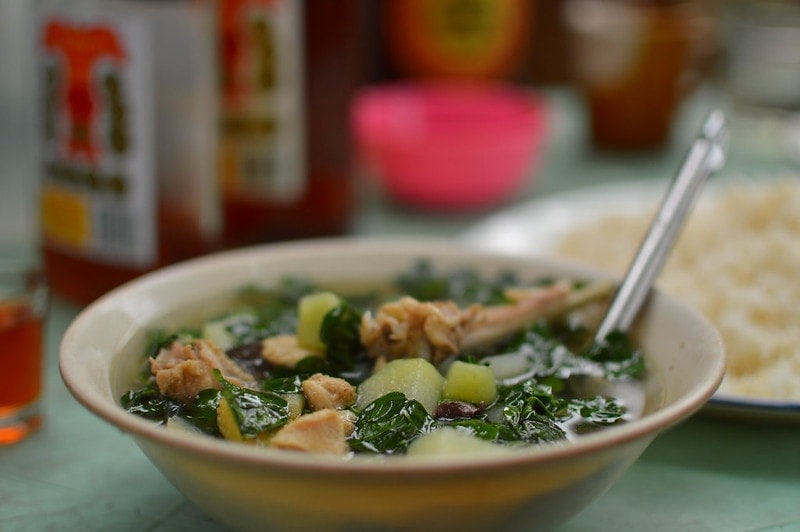
Efo Elegusi / Egusi (Nigeria)
African soups have typical preparations with surprising flavours. An example is Egusi soup of Nigerian origin, traditionally consumed by the Igbo people.
Egusi is the name given by the inhabitants of West Africa for pumpkin and melon seeds, which are the main ingredients of Egusi soup. The seeds are fried in palm oil and added to a broth that carries fish, dried shrimp, beef tripe, vegetables and spices.

Ramen (Japan)
Oriental food has always been marked by the diversity of flavours composing the same dish. Therefore, one of Japan’s most traditional soups could not be different. Ramen consists of a broth based on pork, fish or chicken, seasoned with taré and served with pasta. As a side dish, several ingredients are used, including vegetables and boiled eggs.
Although this soup is predominantly famous in Japan, its origin is Chinese. Among the legends about Ramen, the best known goes back to the 17th century, when a feudal lord was presented with food by a Chinese teacher, being the first Japanese to try the soup. But there are controversies, and it is also believed that ramen was introduced into Japan by Chinese immigrants between the 19th and 20th centuries and gained popularity after the Second World War.
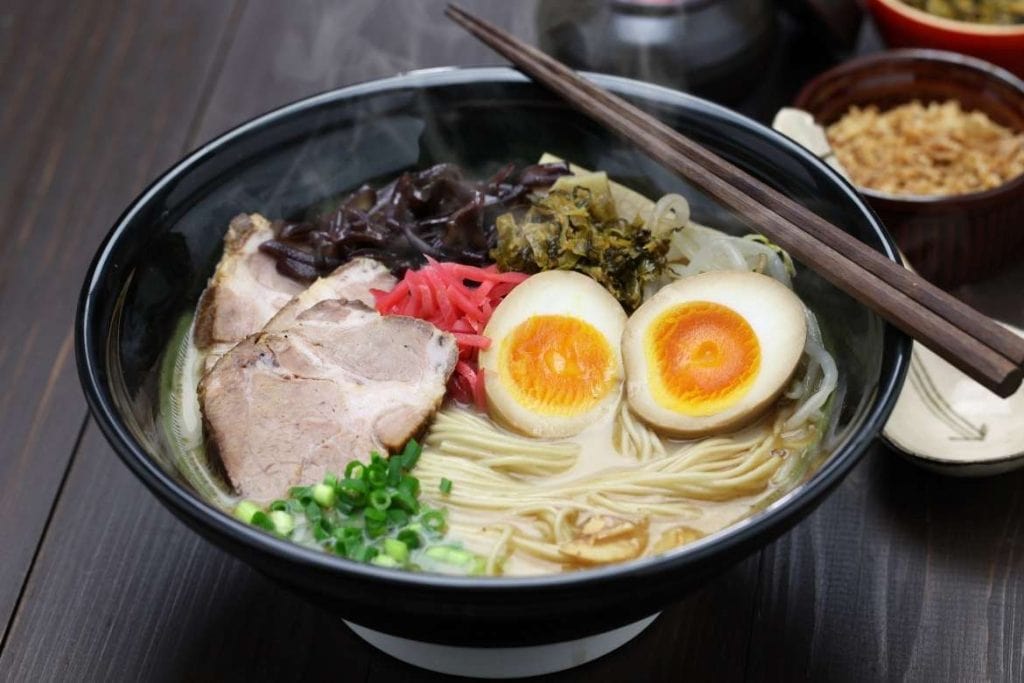
Borscht (Russia / Ukraine)
One of the great contributions of Eastern Europe to the world’s cuisine can be represented through the Borscht soup. The characteristic colour of the soup comes from beets, but the recipe also includes several other vegetables, meats and mushrooms. It can be consumed cold or hot, usually accompanied with a serving of sour cream.
Russia and Ukraine claim the origin of the soup. However, the oldest reports associate the consumption of this dish with the confederation of Slavic tribes that inhabited the region for thousands of years, when none of the countries still existed. It remains to be seen which country will be able to include this typical soup on Unesco’s list of Intangible Cultural Heritage.
